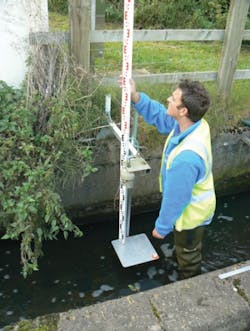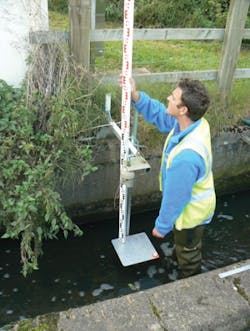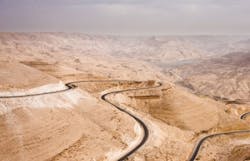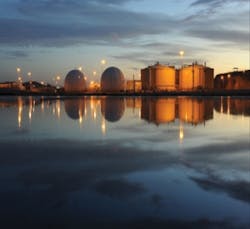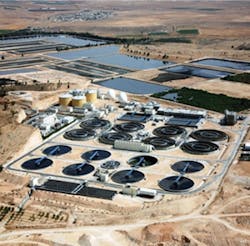Reuse Steps Up in Water-Poor Jordan
Prior to the recent protests in Amman, USAID awarded a US$28 million, task order for a water reuse and environmental conservation project in Jordan. Tom Freyberg speaks to senior engineer George Harris about the project and challenges of changing wastewater perceptions across the Middle East.
Pro-democracy protests in Jordan may not have escalated to Tunisia and Egypt levels over the last few weeks, but the population is being vocal over rising global food prices and unemployment levels. Reports at the end of February showed that some 6,000 Jordanians took to the streets of Amman. Calling for new elections and changes to the law giving King Abdullah absolute power, the country's population - as seen across the region - wants change.
While the economic landscape in the country looks uncertain for the months ahead, there remains one urgent historic demand which won't be changed: the need for fresh water supplies. As one of the five most water poor countries in the world, the country has attracted finance to help bring its water and wastewater infrastructure up to scratch. It was in October of last year when the United States' Millennium Challenge Corporation (MCC) pledged to invest just over $275 million to improve water distribution and wastewater collection in the northeast city of Zarqa in Jordan. The investment is set to benefit three projects to improve water supply, wastewater collection and treatment. A month later and the U.S. Agency for International Development (USAID) awarded AECOM a US$28 million, five-year task order in Amman for water reuse and environmental conservation. This was part of the Water Reuse and Environmental Conservation Project launched by USAID and the Jordanian Government. Aims of the project include strengthening the government's ability to monitor and regulate industrial water pollution, improve wastewater treatment and public awareness of water reuse.
Water and Wastewater International (WWi) spoke to George Harris (GH), senior engineer, water resources & environment officer, USAID, Jordan to find out more about the project.
Jordan's Disi water conveyance project involves a 325-km pipeline being built through the Jordanian desert to Abu Alanda and Dabuk reservoirs
WWi: The $28 million dollar project with AECOM is focussed on industrial water reuse. Why is industrial and not municipal water the focus here?
GH: The simplest answer is that it adds industries to our ongoing portfolio. We've addressed water issues in municipalities and through our economic development department. The industrial sector is a huge water user and many countries in Middle East struggle with industrial water demand. Jordan has created the industrial zones, which are special zones to locate and consolidate industry to help deal with problems more effectively. Aims of the partnership are to look at water demand and the potential for reuse, along with political and regulatory challenges.
Project ProfileDuration: 2010-2015
Total Funding: $28 million
Focus: Industrial water reuse
Beneficiaries: Jordanian industries, farmers, general population
Geographic coverage: Nationwide
WWi: How is USAID working with Jordan's government to introduce and enforce regulations?
GH: In collaboration with the Ministry of the Environment we've actually engaged the U.S. Environmental Protection Agency (EPA) to help with the enforcement of issues. The government has created a group called Environmental Rangers, who act in the "environmental police" type role. We've had EPA participation on training the new teams. This includes addressing what they should be looking for, reviewing the existing laws and finding out if there's room for improvement and how the judicial process should treat problems or violations.
WWi: Environmental Rangers? Interesting. How are they and new levels of regulation being perceived by the Jordanian industries?
GH: It's a relatively new approach and we're too early in the game to make any kind of real assessment. There's always a certain amount of push-back, especially when a certain amount of environmental compliance is involved at a cost to the industry. We've seen some initial co-operation but it's still early in the programme.
WWi: Once reused, which industries will the water benefit?
GH: The reuse aspect of the new contract is broad, it's general and not confined to just the industry. We've had a couple of demonstration projects in the past - pilot studies on reuse that were successful. One in Wadi Mousa, in Southern Jordan where the water reuse was agricultural and one in Aqaba, where the water reuse was industrial. Those have been very successful. There's an interesting aspect here in terms of what I would call indirect reuse.
We aid-supported a project to upgrade the AsSamra wastewater treatment plant that treated water from Zarqa and Amman. That plant discharges into the Zarqa river, which flows to the King Talal Dam reservoir, which feeds the King Abdullah Canal in the Jordan Valley. Most of that water ends up being used agriculturally.
The water is of course being blended with other waters but a large percentage of it is basically the plant effluent from the As-Samra wastewater plant.
WWi: I see that USAID supported the Zara Ma'in desalination plant, which supplies 30% of Amman's water. The end of last year saw Jordanian minister of state for mega projects, Imad Fakhoury, invite companies to bid on a contract for the Red Sea desalination project. Costing $10 billion and set to produce 200 million cubic metres of water per year, how will this fit in with the reuse schemes and your conservation project? Is such a large scale desalination plant the way forward for the country?
GH: I would support desalination in the concept but not necessarily endorsement of the projects being rolled out right now. If the population of Jordan is going to continue to grow and they need fresh water, then unless there's a major climate change with regards to water, then I don't see any other source for the water. Water efficiency improvements, reuse, conservation - these are just going to be natural parts of the programme. Desalination of water between treatment and delivery is going to be expensive and the country needs to be become really efficient in the use of their water to minimise the costs.
The As Samra Treatment Plant serves the Amman and Zarqa area
WWi: To help with overall water supply efficiency, should the current issue of illegal private wells - exacerbating unsustainable groundwater extraction - be addressed more directly?
GH: We've been involved in several water monitoring and evaluation programmes over the years. Rather than focusing on the illegal wells, it's really the issue of the groundwater in total, how much is being extracted and the condition of the aquifers and how to correct that. It's a tough issue here. It's very political - most people agree that they are over pumping and levels are dropping. Most of the donors here have tried to tackle the problem and with marginal success to date. Everybody agrees it's a problem, but nobody wants to take the next steps to solve it.
WWi: So what steps should be taken then?
GH: We need to reduce the withdrawal rate until aquifers stabilise - this is a goal I think most people would agree with. How you do that is the problem. Illegal wells get a lot of attention and if we could eliminate these we would solve the problem. Another challenge is finding a way to monitor and control what is being pumped out of the aquifer; legal or illegal wells.
WWi: Public-Private Partnerships are now gathering momentum in Jordan and could inevitably lead the way with the Red Sea desalination project. Do you think the market is now ready for such collaborations?
GH: Absolutely. The As-Samra wastewater plant I referred to earlier, which is a BOT (builld-operate-transfer) contract in a 25-year concession, has been considered a success and is a form of a PPP. USAID provided the funding to give it a nudge and ending up paying slightly less than half the capital costs.
The treatment plant processes wastewater equivalent of a population of two million people.
The facility is now producing a high quality effluent, as well as the majority of its own power, and serves as a good example of PPP. For long term sector sustainability and affordability, it may be beneficial to see higher levels of involvement by Jordanians in future PPPs.
More Water & WasteWater International Current Issue Articles
More Water & WasteWater International Archives Issue Articles
